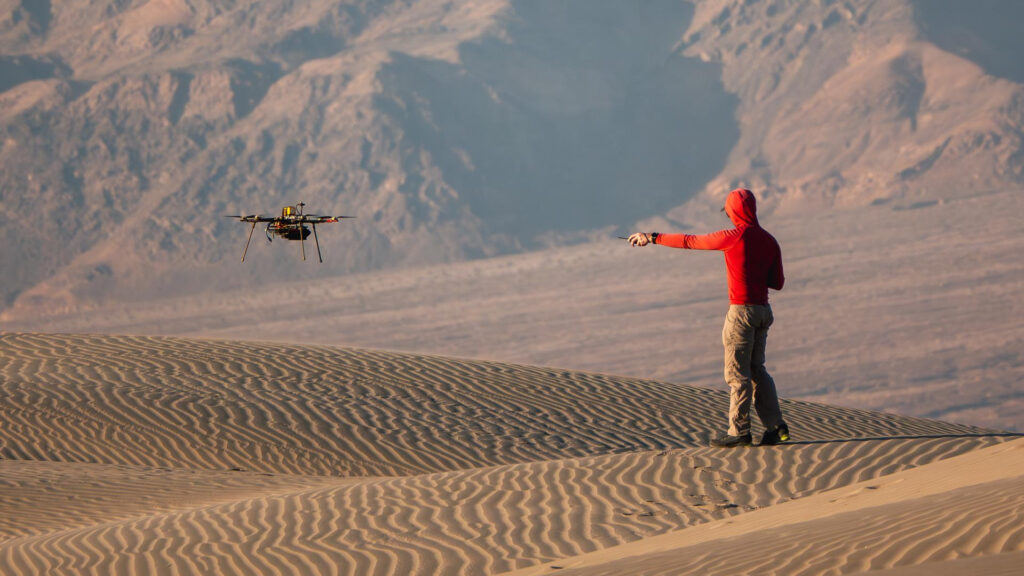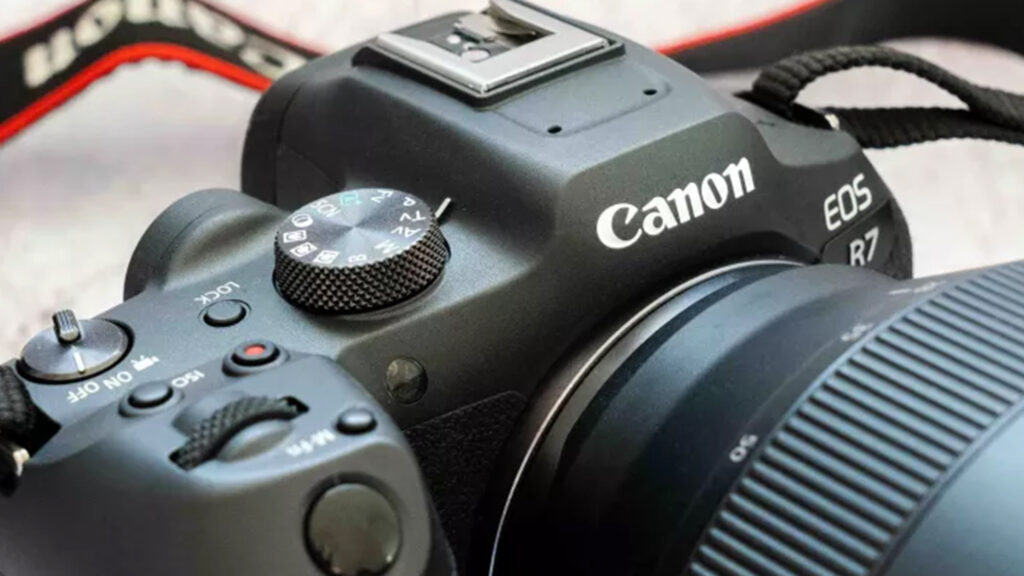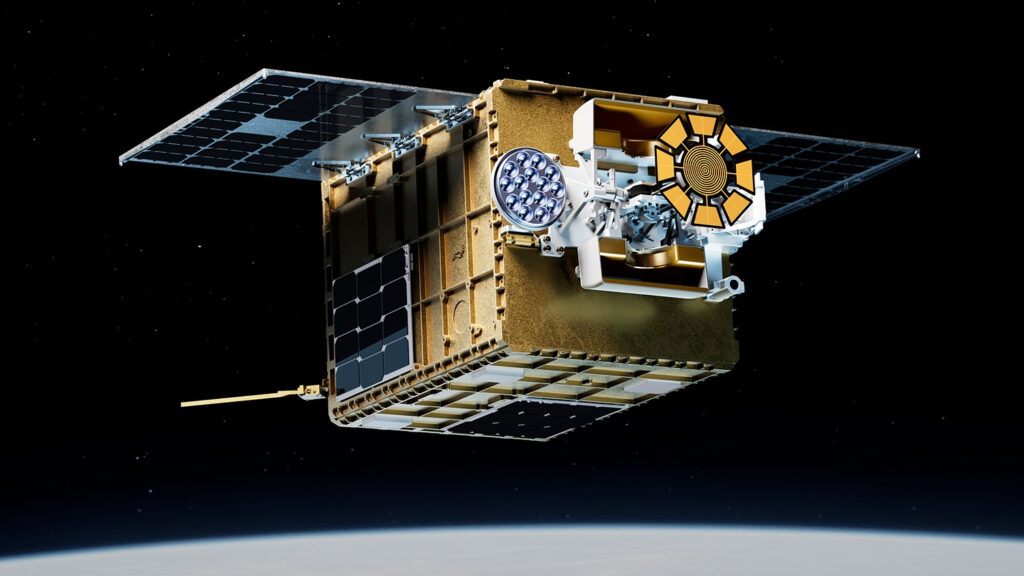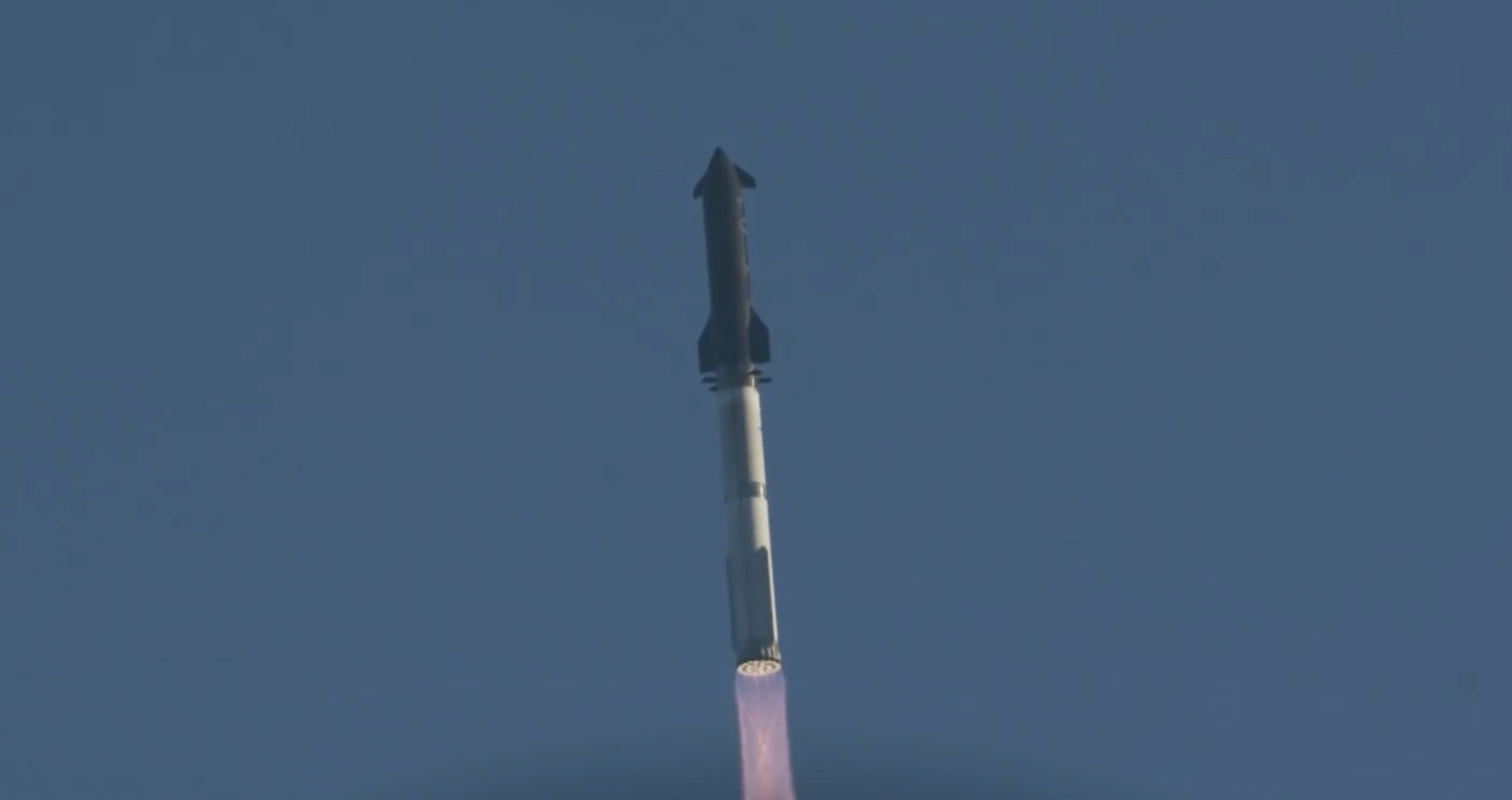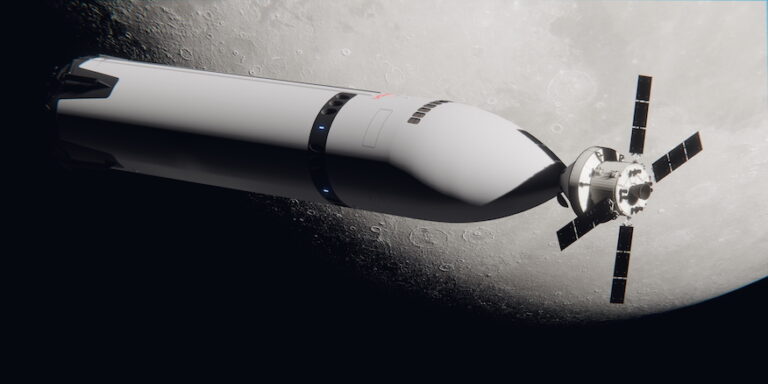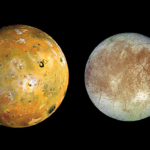Now Reading: SpaceX launches giant Starship rocket for moon and Mars on 11th test flight (video)
-
01
SpaceX launches giant Starship rocket for moon and Mars on 11th test flight (video)
SpaceX launches giant Starship rocket for moon and Mars on 11th test flight (video)
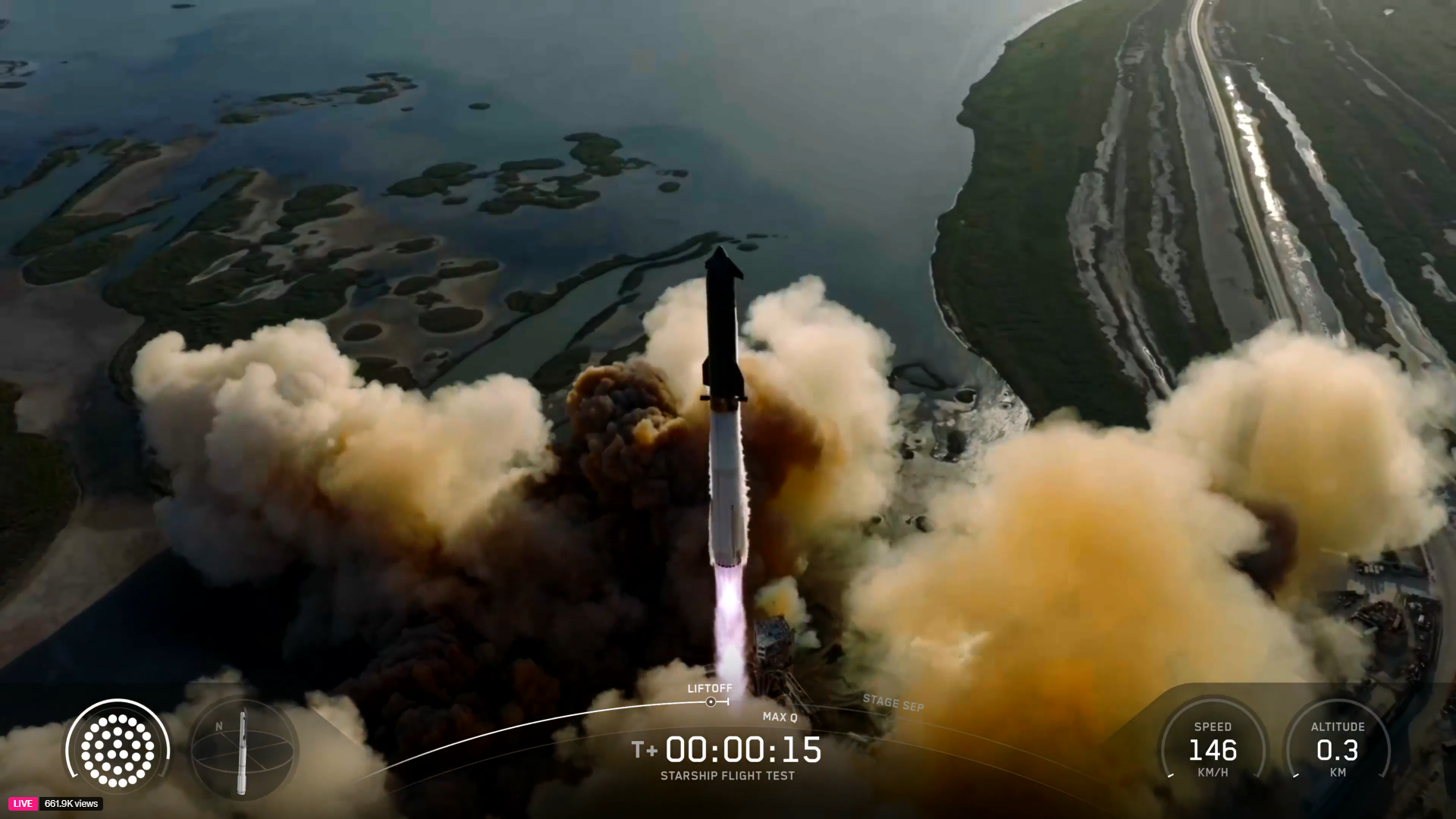
That’s two in a row for Starship.
SpaceX’s Starship , the biggest and most powerful rocket ever built, aced a suborbital test flight today (Oct. 13), following up on a similar success in late August.
Today’s mission, which lifted off from SpaceX’s Starbase site in South Texas, was the 11th overall test flight for the Starship program. It was also the final launch of the current version of the giant vehicle, which will soon be replaced by an even larger variant. And this swan song was a memorable one.
“Let ’em hear it, Starbase!” SpaceX spokesperson Dan Huot said during the company’s launch webcast today, as employees at the site cheered the test flight’s successful conclusion. “What a day!”
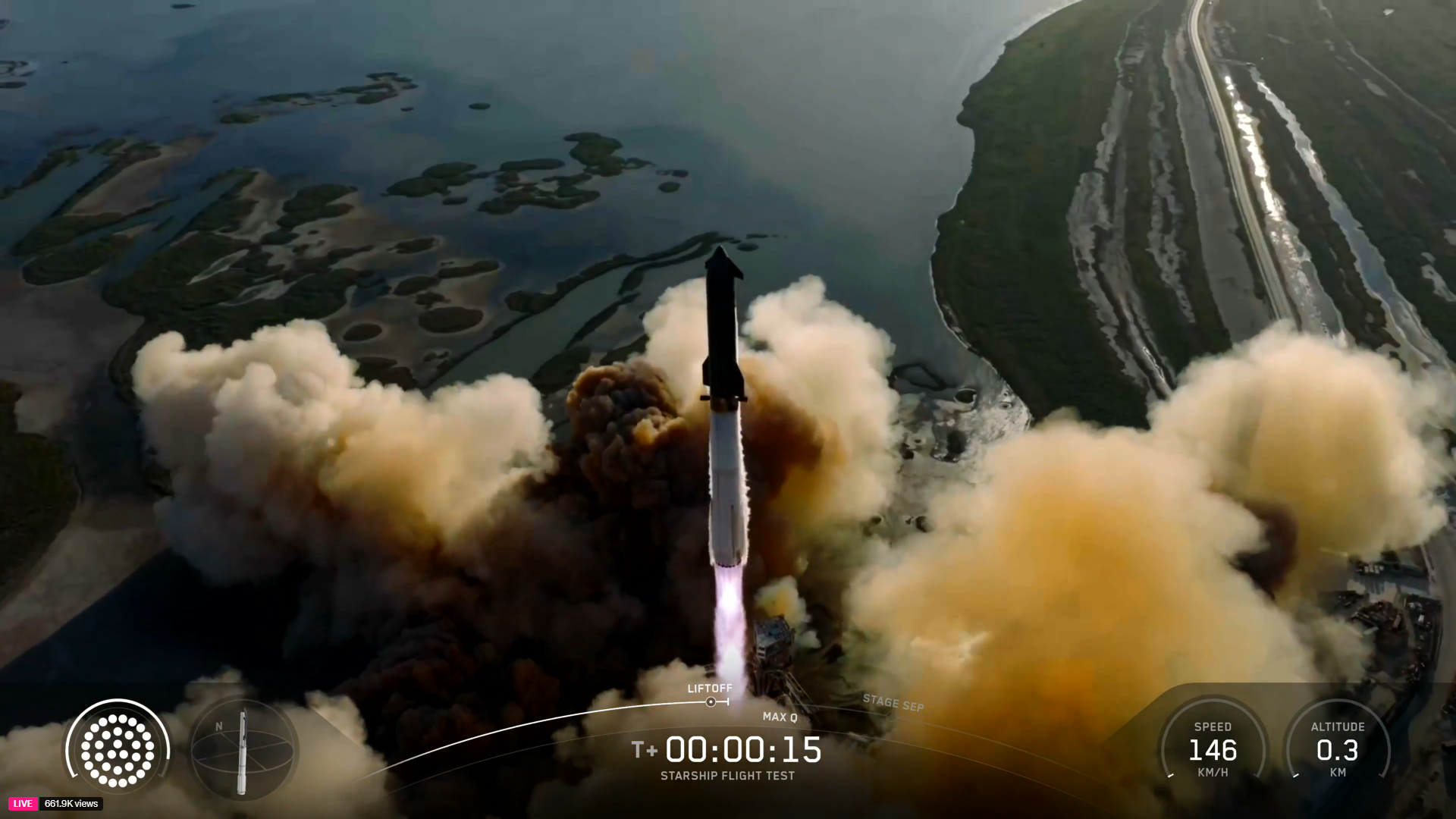
A rocket for the moon and Mars
SpaceX is developing Starship to help humanity settle Mars, a long-held dream of company founder and CEO Elon Musk. Indeed, Musk, the world’s richest man, has said he established SpaceX back in 2002 primarily to help our species set up shop on the Red Planet.
The moon is also in Starship’s sights: NASA chose the vehicle to be the first crewed lander for its Artemis program, which aims to put boots on the moon for the first time since the Apollo era. If all goes to plan, Starship will land astronauts near the lunar south pole for the first time on the Artemis 3 mission, which is scheduled to launch in 2027.
Musk was on hand Monday evening to watch the Starship Flight 11 launch in person. But not from launch control.
“This is really the first time I’m going to be outside and watching the rocket,” Musk said during a brief cameo on SpaceX’s launch livestream. “It’s going to be much more visceral.”
Starship’s secret sauce is its envisioned ability to loft incredibly large payloads with mind-boggling frequency. The vehicle is capable of carrying 165 tons (150 metric tons) to the final frontier, and both of its stages — the Super Heavy booster and an upper stage known as Starship, or Ship for short — are designed to be fully and rapidly reusable.
SpaceX plans to bring both Super Heavy and Ship back to the pad after each flight, catching them with the launch tower’s “chopstick” arms. This strategy — which SpaceX has demonstrated three times to date with Super Heavy, though not yet with Ship — will allow superfast inspection and reflight, potentially allowing Starship to launch multiple times per day from a single site, according to Musk.
Today’s launch, by coincidence, occurred on the one-year anniversary of SpaceX’s first historic catch of a Super Heavy booster, on the Starship Flight 5 test flight.
The current iteration of the vehicle, known as Version 2, stands about 403 feet (123 meters) tall fully stacked. But future variants will be even bigger: Version 3 will be roughly 408 feet (124.4 m) tall, and a “Future Starship” that Musk teased in a May 2025 presentation will tower a whopping 466 feet (142 m) above the ground.
“Future Starship” is likely Version 4, which Musk later said is expected to debut in 2027. V4 will have a total of 42 Raptor engines — three more than the V2 and V3 variants. (The extra three will go on Ship, giving the upper stage nine engines.)
Test flight setbacks — and a bounceback
These are quite ambitious plans, and this summer they seemed even more so. On three straight test launches — Flight 7 in January, Flight 8 in March and Flight 9 in May — SpaceX lost Ship prematurely.
On Flights 7 and 8, the upper stage exploded less than 10 minutes after liftoff, sending debris raining down on parts of the Caribbean. On Flight 9, Ship broke apart upon reentry to Earth’s atmosphere.
SpaceX lost another Ship in June, this time at Starbase: The vehicle that was being prepped for Flight 10 exploded on the test stand, forcing the company to press another Ship into service.
But that replacement upper stage performed well, as did its Super Heavy partner: Flight 10, which launched on Aug. 26, was a complete success. The booster came back to Earth as planned for a splashdown in the Gulf of Mexico about 6.5 minutes after liftoff, and Ship did the same in the Indian Ocean an hour later.
Ship also managed to relight one of its Raptors in space, demonstrating an ability that will be crucial for future missions to the moon and Mars. The vehicle also deployed some payloads — eight dummy versions of SpaceX’s Starlink satellites, which were released on the same suborbital trajectory as that of Ship.
Flight 11 repeated those successes today.
The final flight of Starship V2
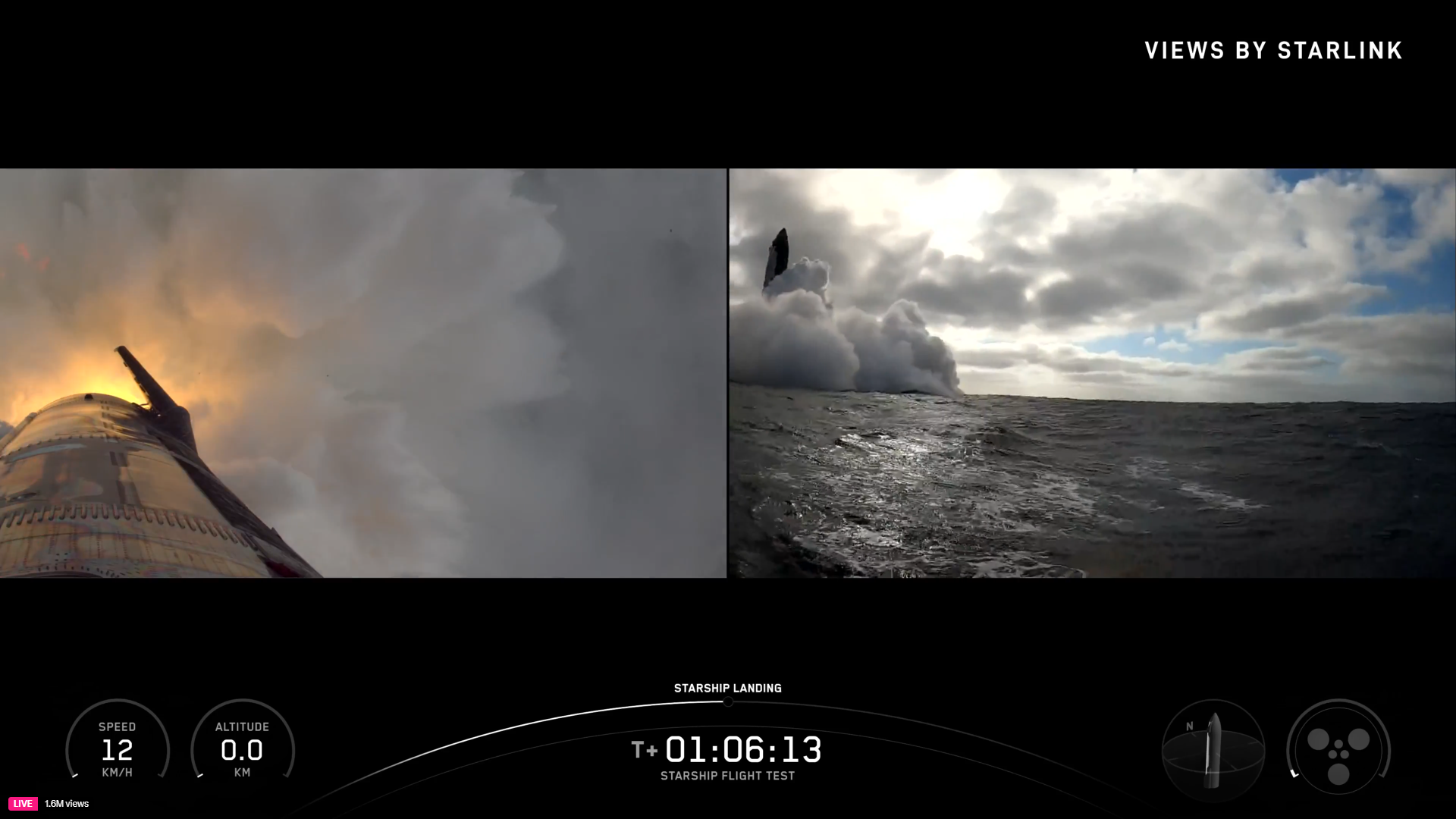
Flight 11’s main goals were the same as those of Flight 10 — bring Super Heavy down in the Gulf and do the same with Ship off the coast of Western Australia, after an in-space Raptor relight and the deployment of eight more dummy Starlinks.
There were a few twists, however. For example, SpaceX employed a new landing burn strategy with Super Heavy today, trying out an engine configuration that will be used by the next-gen version of the booster.
“Super Heavy will ignite 13 engines at the start of the landing burn and then transition to a new configuration with five engines running for the divert phase,” SpaceX wrote in a Flight 11 mission description. “Previously done with three engines, the planned baseline for V3 Super Heavy will use five engines during the section of the burn responsible for fine-tuning the booster’s path, adding additional redundancy for spontaneous engine shutdowns.”
Flight 11 also marked the second-ever reflight of a Super Heavy: This same booster also conducted Flight 8, ending its duties that day with a return to Starbase and a chopsticks catch. SpaceX changed out just nine of its 33 Raptors ahead of today’s flight, meaning that 24 of them were flight-proven.
The company tweaked Ship a bit as well, to gather data that could aid its future trips back to Earth. For example, SpaceX removed heat-shield tiles to stress-test certain “vulnerable areas” of the upper stage.
And, “to mimic the path a ship will take on future flights returning to Starbase, the final phase of Starship’s trajectory on Flight 11 includes a dynamic banking maneuver and will test subsonic guidance algorithms prior to a landing burn and splashdown in the Indian Ocean,” SpaceX wrote in the mission description.
All of this went to plan on Flight 11, which kicked off with a launch from Starbase at 7:23 p.m. EDT (2323 GMT; 6:23 p.m. local Texas time). It was the final liftoff from the site’s first orbital launch pad before it’s overhauled to get ready for the Starship V3 variant.
“Among many other things, we’re installing a new orbital launch mount, a new flame trench system, and upgrading the chopsticks for future catches,” Jake Berkowitz, a SpaceX lead propulsion engineer, said during today’s launch webcast. “So until that’s complete, we’ll be running launches from Pad 2, which will be online very soon.”
Super Heavy and Ship separated about 2.5 minutes into flight today, and the booster made its pinpoint splashdown in the Gulf four minutes after that.
“Congrats to the whole SpaceX team,” Berkowitz said after the huge booster hit the water. “That was incredible!”
Related Stories:
Ship deployed the eight payloads over a six-minute stretch that began about 19 minutes after liftoff, when the vehicle was 119 miles (192 kilometers) above Earth. The vehicle also aced its brief Raptor relight, which occurred just under 38 minutes after launch.
Ship then made its own return to Earth, surviving the intense heat of reentry despite the selective heat shield tile-stripping. The vehicle aced its banking maneuver, then splashed down in the Indian Ocean a little over 66 minutes after liftoff.
And it was a pinpoint landing, occurring within view of a buoy-mounted camera that SpaceX set up beforehand. The dramatic imagery memorializes the successful sendoff for Starship V2, which now cedes the spotlight to its even bigger successors.
“We promised maximum excitement,” Berkowitz said toward the end of today’s launch webcast. “And Starship delivered!”
Stay Informed With the Latest & Most Important News
Previous Post
Next Post
-
 01From Polymerization-Enabled Folding and Assembly to Chemical Evolution: Key Processes for Emergence of Functional Polymers in the Origin of Life
01From Polymerization-Enabled Folding and Assembly to Chemical Evolution: Key Processes for Emergence of Functional Polymers in the Origin of Life -
 02Panasonic Leica Summilux DG 15mm f/1.7 ASPH review
02Panasonic Leica Summilux DG 15mm f/1.7 ASPH review -
 03How New NASA, India Earth Satellite NISAR Will See Earth
03How New NASA, India Earth Satellite NISAR Will See Earth -
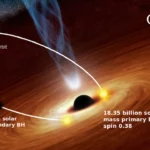 04Two Black Holes Observed Circling Each Other for the First Time
04Two Black Holes Observed Circling Each Other for the First Time -
 05And Thus Begins A New Year For Life On Earth
05And Thus Begins A New Year For Life On Earth -
 06Astronomy Activation Ambassadors: A New Era
06Astronomy Activation Ambassadors: A New Era -
07SpaceX launch surge helps set new global launch record in 2024












